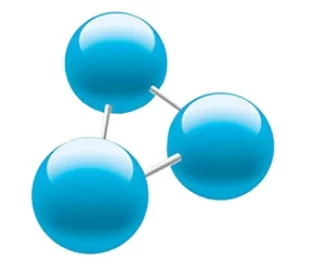Frequently Asked Questions
Is Ozone Dangerous?
Yes, but the concentration in the room should be important. The danger threshold is 5 PPM FOR 30 MINUTES.
We designed Pyramid Air Protect® to never achieve such high concentration.
From 0.5 PPM the effectiveness of ozone against viruses, bacteria is approved.
A very pungent odor indicates that you are in the presence of ozone. This odor is noticeable from 0.01 ppm.
This odor perception threshold is lower than the occupational exposure limit values (8 hours per day), which are between 0.1 ppm and 0.2 ppm according to regulations.
Respiratory problems:
The symptoms observed depend on the concentration.
This can range from simple temporary olfactory anesthesia, to severe lung problems (at concentrations of 9 ppm).
1 ppm is the recommended concentration in Boost Ozone mode, which is nine times lower.
Between these two extremes, one can observe irritating symptoms.
Is ozone dangerous and have carcinogenic effects?
No, according to the INRS (National Research and Safety Institute):
The results of epidemiological studies do not allow any conclusions to be drawn that ozone has a carcinogenic effect on humans and Is ozone dangerous.
Despite a concentration of 1.5 ppm, which is well below the IDLH of 5 ppm, users or employers are encouraged to use their judgment to avoid unnecessary risks.
INRS (NATIONAL RESEARCH AND SAFETY INSTITUTE) TOXICOLOGICAL LEAVES
The ozone shock must never be activated with the presence of humans or animals.

O3
Ozone Mode !
A visible and severe audible alarm is present during the ozone shock. People who may be close to the disinfection area at a certain point must be warned beforehand that this alarm means they must quickly move away from potential hazards. Gaseous ozone has a potential half-life that is longer than ozone dissolved in water. In practice, however, the gaseous ozone oxidizes everything around it, reducing its half-life to a few tens of minutes. As a precaution, we recommend waiting at least an hour before entering a room that has been treated in ozone shock mode.
Explanation of different types of ozone.
- Stratospheric ozone and tropospheric ozone (commonly known as the “ozone layer”). Most of the tropospheric ozone is an anthropogenic pollutant that is produced by human activities.
- Tropospheric ozone has the same origin and the same effects on the environment and health as stratospheric ozone from great heights
Protects us from harmful ultraviolet (UV) that comes from the sun.
In both cases it is the same molecule, but the influence is different depending on the altitude and concentration in the air.
Ground ozone pollution is the result of a complex mechanism.
Tropospheric ozone is massively formed from “precursor” pollutants under the action of solar radiation (UV). including nitrogen dioxide NO2 released from vehicle exhaust, chimneys, incinerators and forest fires. Tropospheric ozone is often qualified for bad ozone.
Source: Wikipedia.
